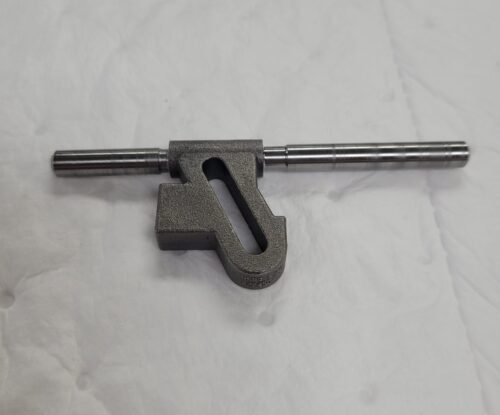The Pros and Cons of Castings
Are you considering castings for your next part order?
Depending on your needs, hogouts—parts machined out of a solid block of material—could be a better solution.
Keep reading to learn the pros and cons of castings and why our AS9100 machine shop leans toward precision machining hogouts.
Castings vs. Hogouts: How Each Process Works
Casting is a manufacturing process that creates parts in near net shape (NNS). In other words, the part is as close in size and shape to the finished product as possible.
During casting, molten metal is poured into a mold, where it solidifies into the shape of the mold. The process typically involves these steps:
- Pattern creation

- Mold making
- Molten metal pouring
- Solidification and cooling
- Removal and finishing
Creating a hogout involves removing material from a solid block to achieve the desired form. The process typically involves these steps:
- Material selection
- Workpiece preparation
- Rough machining
- Semi-finishing and finishing
- Inspection and quality control
- Additional operations
Both processes can produce quality parts. So, which one is better? Let’s examine some of the pros and cons of castings compared to hogouts.
The Pros of Castings
Less material waste
When a casting is complete, there’s no leftover material. The exact amount of metal needed to fill the mold is used to create the part. Since the precision machining process used to create a hogout is subtractive, more material is required.
Reduced precision machining time
Castings require significantly less precision machining than hogouts. By the time a casting reaches our AS9100 machine shop, most of the work is done because the base shape has already been achieved.
No need for assembly
Sometimes, a part needs to be assembled from more than one hogout. With casting, it’s possible to consolidate multiple pieces into just one.
The Cons of Castings
Longer lead times
Ongoing issues like supply chain disruptions and the manufacturing labor shortage are delaying casting orders. It used to take 3-6 months to get molds. Now, it can take a year or more.
Quality issues
Castings are prone to quality issues you don’t have to worry about with hogouts. With a casting, we could be 95% done with post-casting precision machining operations and have to scrap the part because of an air pocket. There may also be divots on the part’s surface that precision machining cannot fix.
What to Do When You Need Castings
If you’re intent on getting castings, our AS9100 machine shop is happy to work with you on your project. We simply like to be transparent about the issues that can arise when choosing this route. If possible, we ask that you supply us with the casting that you need machined. However, once you have chosen and approved a casting supplier, we can manage the purchasing process from the designated supplier.
Even better: consider modifying your part design to transition from castings to hogouts. We always prefer to machine parts from solid materials and find that hogouts are much more consistent in quality than castings.
Looking to the Future…
One of the most exciting things about manufacturing is that it’s always evolving. In the future, additive manufacturing may be an alternative solution to castings and hogouts.
Our team uses plastic 3D printers at Peerless Precision, but the technology isn’t quite there yet for it to offer a viable alternative to castings and hogouts.
For now, we’re happy to discuss your casting or hogout needs. Request a quote from our AS9100 machine shop today.





Comments are closed